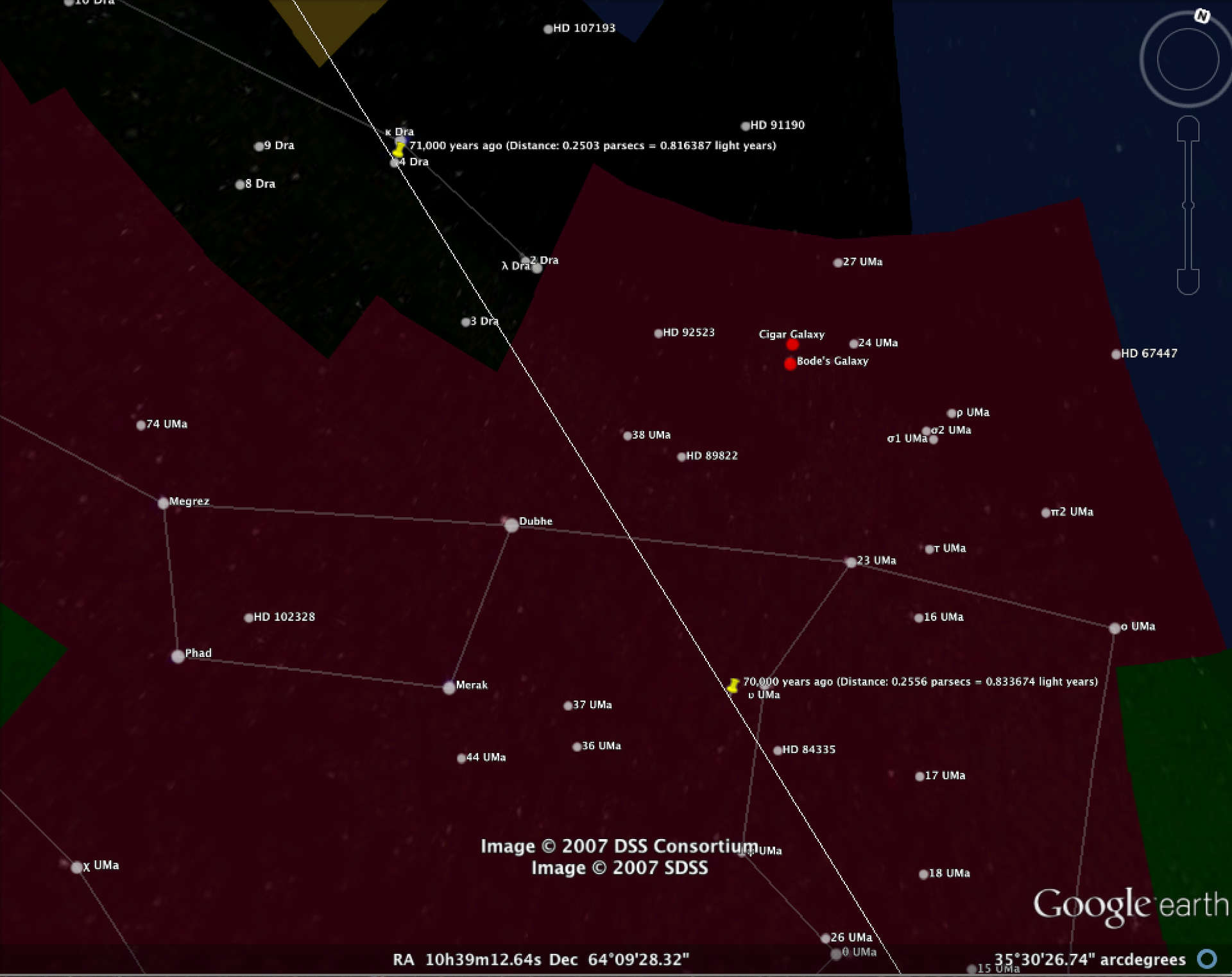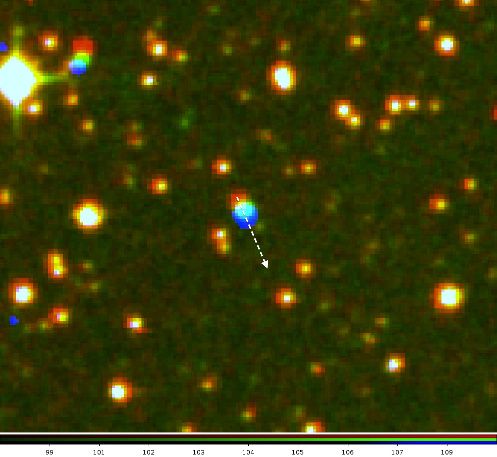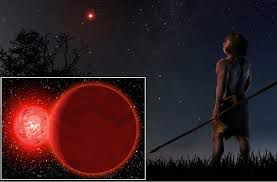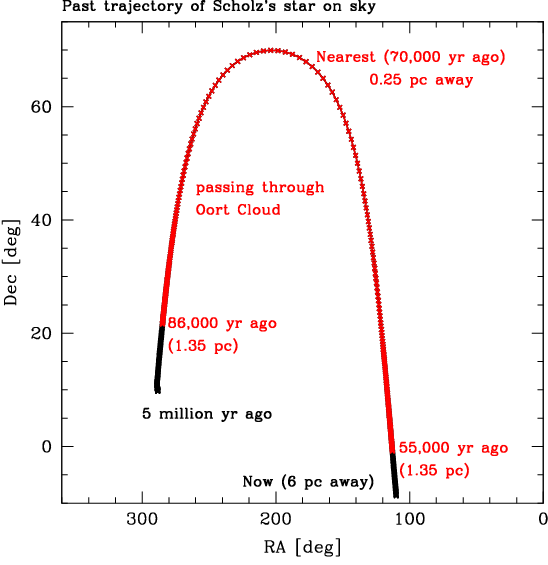Scholz's Star
Scholz's Star
This is interesting because it was a relatively near miss only 70,000 years ago, which is like a mere second in cosmological time.

Based on observations and computer simulations, a star system passed close to our solar system approximately 70,000 years ago at a distance of 0.82 light years, which means that it passed right through the Oort cloud where there are millions of proto-comets.

The star is called Scholz's star because astronomer Ralf-Dieter Scholz discovered it in 2013. His observation was collaborated and new research has established that it caused comets to be perturbed.

Scholz's star is a M9 red dwarf star that is 89 times the mass of Jupiter. It is part of a binary system with a T5 Brown dwarf partner. This is a relatively new star system between 3 to 10 billion years old. At the time this star system plowed through our solar system it would have been visible in high latitudes of the northern hemisphere. In other words, our human ancestors would have seen it but would have had no idea what was going on.

The theory that this star system passed close to ours is based on observations and calculations. Scholz's star is 20 light years away at the present time. At first, it was thought that this system didn't disturb any comets in the Oort cloud, but new studies indicate that it did. This is based on observations of hyperbolic objects (comets and asteroids that have hyperbolic orbits around the Sun). A hyperbolic orbit would take an object out of the solar system. Normally, these objects are disturbed evenly in the sky, but astronomers found 39 out of 339 hyperbolic objects that seem to be coming from a region in the constellation of Gemini, which is the current location of Scholz's star system.

Although this seems ominous, there is nothing to fret about. Perturbed comets in the Oort cloud take about 2 million years to show up in the inner solar system.
Wiped my brow (Whew!).
Thanks for reading!
Bạn đang đọc truyện trên: Truyen247.Pro